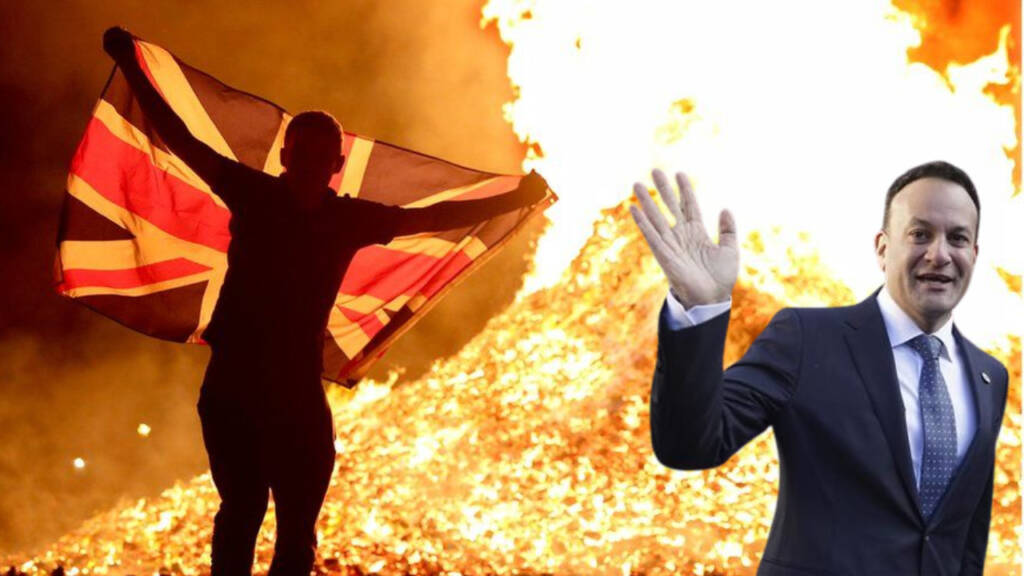Recently, Ireland has become a focal point in discussions concerning immigration, civil liberties, and free speech due to a distressing incident where a man stabbed five individuals, including three children, outside a school. This individual, an immigrant who received a deportation order from the Irish government 23 years ago, sought an appeal to attain Irish citizenship. The aftermath saw upheaval in Dublin as riots broke out, resulting in the destruction of property and looting. Authorities attributed the violence to extreme right-wing groups opposing immigration, a common narrative in such situations.
The primary suspect, originally from Algeria, has resided in Ireland for over two decades, having acquired Irish citizenship more than ten years ago. Despite being in his late 40s, he had drawn attention from the Garda (Irish police) multiple times in the past year. While brought to court on charges related to prior incidents, he did not receive a conviction, and law enforcement is currently guarding him.
Following the stabbing incident, widespread shock reverberated throughout Ireland as rioters unleashed violence, setting ablaze businesses, looting buildings, and even targeting law enforcement. The public’s outrage was directed at the Irish government for its perceived leniency in immigration policies, transforming the country into what many perceive as a perilous living environment.
The influx of immigrants has significantly impacted the state’s demographics, with the population nearing 5.3 million. Notably, between April 2022 and 2023, around 141,600 immigrants entered the Republic, marking the highest influx since 2007 when immigration peaked at 151,100, as reported by the Central Statistics Office (CSO). A substantial portion, 81,000 individuals, arrived from outside the EU, primarily refugees seeking asylum amid the conflict in Ukraine.
This surge in immigration has brought to light Ireland’s immigration challenges. As refugees arrived, straining state resources and unsettling local communities, two distinct forms of civic unrest emerged. Migrants found themselves housed in makeshift accommodations like cubicle dorms in office buildings or tents. Consequently, discontent has risen among young graduates and working millennials, prompting many to leave the country in pursuit of better prospects due to an exacerbated housing crisis driven by inflation.
Join us on Telegram: https://t.me/tfiglobal
The housing crisis has worsened significantly owing to the rapid influx of immigrants, leading to an increase in homelessness despite the near-full employment rate in Ireland, reaching an unprecedented high.
This has led to the anti-migrant sentiments to surge in Ireland, resulting in a significant rise in protests across the nation, echoing the rallying cry of “Ireland is Full.” Figures indicate a notable increase in these demonstrations, with 307 recorded in 2022 and 64 already observed in 2023. In a recent protest in Dublin, over 2,000 individuals participated, signaling the magnitude of discontent.
The epicenter of these protests lies in Dublin’s East Wall. Here, frustration grew in November when the government repurposed a state building into a migrant residence without consulting locals. Subsequently, regular gatherings drew hundreds. Contrary to diminishing over time, these protests intensified, expanding nationwide, displaying distinctive characteristics from similar movements in Europe.
Simultaneously, Ireland has witnessed a surge in crime rates, notably in severe offenses such as murder and rape. This escalation in criminal activity has spurred Irish citizens to organize protests against the government, reflecting growing concerns over public safety.
The government’s stance on the issue appears unwavering, seemingly dismissing the current situation as far-right propaganda, thereby disregarding its implications. In the aftermath of the violent protests, authorities have attributed the unrest to what they label as ‘far-right ideology.’ Instances of violence included the setting ablaze of a police car and tram, along with assaults on officers. Local media reported instances of protesters chanting anti-immigrant slogans during the protests.
Police Commissioner Drew Harris addressed the situation, characterizing the disorder as orchestrated by “a complete lunatic, hooligan faction driven by far-right ideology,” as reported by the Irish Independent. This portrayal of events underscores the attribution of the unrest to specific extremist elements subscribing to far-right ideologies.
The police highlight the disruptive impact of far-right radicalization in the country. Irish Police Commissioner Drew Harris emphasized that individuals influenced by far-right ideologies and social media exploitation leveraged a “terrible crime” to incite chaos, painting the situation as a product of right-wing propaganda.
Simultaneously, the government’s approach appears to be veering toward hate speech censorship. Notably, former UFC champion McGregor denounced the riots in Dublin but expressed discontent with the nation’s leadership, essentially issuing a challenge for change. However, McGregor now faces scrutiny from Irish authorities for his remarks, as the police investigate his social media posts, citing potential hate speech propagation in the aftermath of the “far-Right riots.”
This response signifies a broader trend where the government is encroaching upon civil liberties, particularly in curbing free speech. This trend isn’t unique to Ireland; similar occurrences have been witnessed in various Western nations. Governments often resort to dismissing critical issues by labeling them as far-right propaganda, maintaining an untouchable stance that deflects urgent concerns demanding their attention. Such actions, purportedly aimed at preserving their image, result in the tightening of controls on free expression and dissent.
Watch More:
